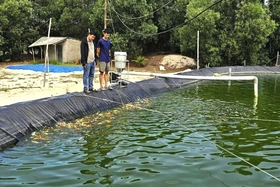4bqpdOG6u8Opw7Thu6tn4bq04bq04bqhZeG6sCF1w4Lhu6vhu5ll4bqrU3Xhu6/DqeG7qnXhu610w6nhu5B14bq0w4LhurJ1w7TDgsOpcuG7r8O04bqk4bq04buZ4bq0w6nhu6/hu63DqeG6sOG6suG7r+G7seG7r8OCdeG7rXPDqeG7sWfhurJ1w4J14bux4buZw6nhu5nDtOG7r+G7reG7r+G7seG6vuG6qS904bq74bqr4bqp4bqww6nDtOG7q2fhurThurThuqFl4bqwVOG7mWfhu5Fl4bqrVeG7rcOp4bqy4buZw7Thu5nhu63DgsOpw4J14bux4buZ4bq04bq1w6nDgnThu5nDqVN14buvw6nhu6p14butdMOp4buRdeG6tMOC4bqydcO0w4LhurXDqcO14buZdeG7rXPDqeG7meG7reG7keG7r+G6vOG7meG7kcOp4bq8dcOCdMOp4bq0w4LhurLhu5nhu61zw4J04bq0w6l14butw6nhu7Fn4bqydcOCdeG7seG7mcOp4bqy4buZ4bq04buv4bqk4bqyw7Thu5nhurThurXDqXRn4bq0w6nDtOG7r+G7reG6tHXhurTDguG7meG7rcOC4bur4bq+w6l14buR4buZ4butw4J1cnXhu5nhu5HDqcOCdOG7mcOp4buR4buZ4bq64buZ4bur4buv4bqw4bux4buZ4butw4LDqeG7r3LDqcOCdOG7mcOpw7Thu69n4bq0w4Jn4burw6nhu5nDtOG7r+G7reG7r+G7seG6vsOpZ+G6tMOpZ8Opw7ThurLhuqTDtHVn4burw6lyZ8O0w4Lhu6/hurLDqeG7keG7mcOC4buZ4bqy4buxdeG7rXXhu61zw6nDgnThu5nDqeG7q+G7r8O0Z+G7q8Op4bq04buvw7R14buvLeG7mcO04buv4but4buv4buxdcO0w6nhu5Hhu5nhurrhu5nhu6vhu6/hurDhu7Hhu5nhu63DgsOpw4Jn4bq04bup4bq0w6LDqSF04bqy4buv4bqkc3Thu6/huqTDgsOpw4J0deG6tMOp4bqw4bqy4buvw7Thu5nhurThurThurXDqcOCdOG7mcOpOuG7meG7r+G6sOG7q+G7meKAmeG6tMOpw5Thu6/huqThu63DtHXhu6vDqeG7r3LDqcOCdOG7mcOp4buRdeG6tMOC4bqydcO0w4LDqXRn4bq0w6l14bq04bq04bqk4buZ4buRw6nhu63huqThu7Hhu5nhurLhu6/huqThurTDqeG6tHVz4butdXJ1w7Rn4butw4LDqeG6suG7meG6tOG7r+G7q+G6pMOCdeG7r+G7reG6tOG6tcOpw7Thu6/hu63DguG6snXDteG6pMOCdeG7rXPDqeG6tHVz4butdXJ1w7Rn4butw4Lhu6vhur7DqcOC4buvw6nDgnThu5nDqWfhu5Hhurpn4butw7Thu5nhu7Hhu5nhu63DgsOp4buvcsOpw4J04buZw6nDtOG7r2fhurTDgmfhu6vDqeG7mcO04buv4but4buv4bux4bq+w6LDqSF04buZ4bq04buZw6nhu5lycuG7r+G6ssOC4bq0w6l0Z+G6uuG7mcOp4bq+deG7meG7q+G7keG7meG7kcOpw7Thu6/hu7Hhu7Hhu5nhu63hu5Fnw7Xhu6vhu5nDqeG6suG7meG6tOG6pOG7q8OC4bq04bq1w6nhu7Fn4bqy4bupdeG7rXPDqeG7reG7r8OCZ8O14bur4buZw6nhurDhurLhu69z4bqy4buZ4bq04bq0w6l14butw6nDgnThu5nDqeG6tOG7r8O0deG7ry3hu5nDtOG7r+G7reG7r+G7sXXDtMOp4buR4buZ4bq64buZ4bur4buv4bqw4bux4buZ4butw4LDqeG7r3LDqcOCdOG7mcOp4bqy4buZc3Xhu6/hu63DouG6qS/hurDhuqvhuqnhurDDqcO04burZ+G6tOG6tOG6oWXhurDDleG7r+G7keG6vmXhuqvhuql14buxc8Opw7Thu6tn4bq04bq04bqhZXXDlOG7meG7rcOC4buZ4bqyZcOp4bq04bqyw7ThuqFldMOCw4LhurDhurThurcvL8O0w6LDtWfhu6/hurbhuqRn4butc8OC4bqydcOi4bq64butL+G7keG7meG6tOG7qcOC4buv4bqwL+G7reG7meG6vOG6tC/hur3hur/hurlmL+G6u+G6u+G6v+G7keG6v+G6u2bhu4Hhur3hu4Hhu4HDguG7heG7geG6v+G6ueG7q+G6vS3DguG6pOG6vi1z4burdOG7keG6vcOi4bq84buZw7XhurBlw6ln4burw4LhuqFlU3Xhu6/DqeG7qnXhu610w6nhu5B14bq0w4LhurJ1w7TDgsOpcuG7r8O04bqk4bq04buZ4bq0w6nhu6/hu63DqeG6sOG6suG7r+G7seG7r8OCdeG7rXPDqeG7sWfhurJ1w4J14bux4buZw6nhu5nDtOG7r+G7reG7r+G7seG6vmXDqS/huqvhuqkv4bqw4bqr4bqp4bqww6nDtOG7q2fhurThurThuqFl4bqww5Rn4bqww4J14buv4butZeG6q0fDqXLhu6vhu5nhu5nDgsOp4buvcsOp4buvcnLhurR04buv4bqy4buZw6lydeG6tHR14butc8Opw7Xhu69nw4LhurTDqXLhurLhu6/hu7HDqcOCdOG7mcOpcnXhurR04buZ4bqy4bux4buZ4butw6nhu69yw6nDlOG6pGfDqTJ14buZw4LDqcOC4buv4bq84butw6l14butw6lTdeG7r8Op4buqdeG7rXTDqeG7kXXhurTDguG6snXDtMOCw6nhurLhu5nDguG6pOG6suG7reG6tMOpZ3LDguG7meG6ssOpZ+G7rcOp4buZw4rDguG7meG7reG7keG7meG7kcOp4bq04buZZ8Op4bq64buv4bq+Z3Phu5nDosOpOnThu6/DguG7r+G6t8OpIeG6smfhu63DqSHhuqThur7hu5nhu63huqkv4bqw4bqr4bqp4bqww6nDtOG7q2fhurThurThuqFl4bqww5Xhu6/hu5Hhur5l4bqr4busc+G6pOG6vuG7meG7rcOpMmfhu63DqVN1Z+G7rXPhurXDqcOCdOG7mcOpLsOCZ+G7reG7kXXhu61zw6nhu5Dhu5nhurDhuqTDguG6vsOpLuG7mcO04bqy4buZw4Jn4bqy4bq+w6nhu69yw6nDgnThu5nDqeG7kHXhurTDguG6snXDtMOCw6k6Z+G6ssOC4bq+w6nDlOG7r+G7seG7sXXDgsOC4buZ4buZw6ln4but4buRw6nDlHRndeG6suG7sWfhu63DqeG7r3LDqcOCdOG7mcOpOuG7meG7r+G6sOG7q+G7meKAmeG6tMOpw5Thu6/huqThu63DtHXhu6vDqXXhu63DqVN14buvw6nhu6p14butdOG6tcOp4bq0w4Jnw4Lhu5nhu5HDqcOCdGfDgsOpw7Xhu5ly4buv4bqy4buZw6nDgnThu5nDqXXhurThurThuqRn4butw7Thu5nDqeG7r3LDqSzhu5nhurThu6/hu6vhuqTDgnXhu6/hu63DqeG7rOG7r8Oiw6nDquG7hy3hu6w7LyEzw6nhu6/hu63DqeG7rsO0w4Lhu6/DteG7meG6ssOp4bq94bq94bq1w6nhur3hurnhurvhu4XhurXDqcOCdcOC4bur4buZ4buRw6nigJwu4bqk4bq0w4JndeG7rWfDteG7q+G7mcOp4buQ4buZ4bq64buZ4bur4buv4bqw4bux4buZ4butw4LDqS7DguG6smfDguG7mXPhur7DqXLhu6/hurLDqTJ14buZw4Lhu61n4bux4oCZ4bq0w6nhu7Bn4bqydcOCdeG7seG7mcOp4buYw7Thu6/hu63hu6/hu7Hhur7DqeG6pOG7rcOCdeG7q8Op4bq94bq5w6rhurnhurXDqTJ14bq0deG7r+G7rcOpw4Lhu6/DqeG6veG6ueG6v+G7geKAncOpw7Xhur7DqcOCdOG7mcOp4bq74bq9w4J0w6nDlOG7meG7rcOC4bqyZ+G7q8Opw5Thu6/hu7Hhu7F1w4LDguG7meG7mcOp4buvcsOpw4J04buZw6k6Z+G6ssOC4bq+4bq1w6nhu5HhuqThurJ14butc8Opw4J04buZw6nDquG6suG7kcOp4bq04buZ4bq04bq0deG7r+G7rcOpdOG7meG7q+G7kcOpdeG7rcOp4buQ4buZw7Thu5nhu7HDteG7meG6ssOp4bq94bq54bq74buH4bq1w6nDgnThu5nDqVN14buvw6nhu6p14butdMOp4buQdeG6tMOC4bqydcO0w4LDqTrhu5nhu6/hurDhu6vhu5nigJnhurTDqcOU4buv4bqk4butw7R14burw6nhu69yw6nDgnThu5nDqeG6veG6ueG6u+G7hy3hur3hurnhur3hurvDqcOC4buZ4bqy4buxw6nhurBn4bq04bq04buZ4buRw6ks4buZ4bq04buv4bur4bqkw4J14buv4butw6nhu6zhu6/DosOp4bq/4bq9L+G7rDstVOG7kuG7rOG7kMOp4buv4butw6nhu5Dhu5nDtOG7meG7scO14buZ4bqyw6nDquG6ueG6tcOp4bq94bq54bq74buH4bq1w6nDtOG7r+G7rcO04buZ4bqy4butdeG7rXPDqcOCdOG7mcOpZTrhurLhu69z4bqyZ+G7scOpcuG7r+G6ssOpw4J04buZw6nhu5Dhu5nhurrhu5nhu6vhu6/hurDhu7Hhu5nhu63DgsOp4buvcsOpw4J04buZw6nDlOG7r2fhurTDgmfhu6vDqeG7mMO04buv4but4buv4bux4bq+w6l14butw6lTdeG7r8Op4buqdeG7rXTDqeG7kHXhurTDguG6snXDtMOCw6ly4buv4bqyw6nDgnThu5nDqeG6veG6ueG6u+G7hy3hur3hurnhur3hurnDqeG6sOG7meG6snXhu6/hu5HDomXhuqkv4bqw4bqr4bqp4bqww6nDtOG7q2fhurThurThuqFl4bqww5Xhu6/hu5Hhur5l4bqrUuG7r+G7q+G7q+G7r+G6vHXhu61zw6nDgnThu5nDqWfhu5Hhu6/hurDDgnXhu6/hu63DqeG7r3LDqSzhu5nhurThu6/hu6vhuqTDgnXhu6/hu63DqeG7rOG7r8Oiw6nDquG7h8Opw7Xhur7DqcOCdOG7mcOp4bq74bq9w4J0w6nDlOG7meG7rcOC4bqyZ+G7q8Opw5Thu6/hu7Hhu7F1w4LDguG7meG7mcOp4buvcsOpw4J04buZw6k6Z+G6ssOC4bq+4bq1w6lHw7TDgnXhu6/hu63DqTrhurLhu69z4bqyZ+G7scOp4bus4buvw6LDqeG6u+G6v+G6vy3DlCFU4buSLyEow6nhu6/hu63DqUfhurDhurJ14burw6nhur3hur/hurXDqeG6veG6ueG6u2bhurXDqcO14bq+w6nDgnThu5nDqTvhuqRn4butc8OpIeG6snXDqTrhurLhu6/hurp14butw7R1Z+G7q8OpOmfhurLDguG6vsOpw5Thu6/hu7Hhu7F1w4LDguG7meG7mcOpw4Lhu6/DqXXhu7HhurDhu6vhu5nhu7Hhu5nhu63DgsOpLOG7meG6tOG7r+G7q+G6pMOCdeG7r+G7rcOp4bus4buvw6LDqcOq4buH4bq1w6nDgnThu5nDqS7Dgmfhu63hu5F14butc8OpOuG7meG7r+G6sOG7q+G7meKAmeG6tMOpw5Thu6/huqThu63DtHXhu6vDqeG7r3LDqcOCdOG7mcOp4buRdeG6tMOC4bqydcO0w4LhurXDqXXhu63DqcO04buv4buv4bqy4buRdeG7rWfDgnXhu6/hu63DqeG6vHXDgnTDqcOCdOG7mcOpLsOCZ+G7reG7kXXhu61zw6nDlOG7r+G7seG7sXXDgsOC4buZ4buZw6nhu69yw6nDgnThu5nDqeG7kHXhurTDguG6snXDtMOCw6k6Z+G6ssOC4bq+w6nDlOG7r+G7seG7sXXDgsOC4buZ4buZ4bq1w6l14bq04bq04bqk4buZ4buRw6k64burZ+G7rcOp4bus4buvw6LDqeG6u+G6u2Yt4buoVC9UKMOp4buv4butw6nhu6zhu6/hurrhu5nhu7HDteG7meG6ssOp4buF4bq1w6nhur3hurnhurtm4bq1w6nDguG7r8OpZ+G7q3Vz4butw6nhurx1w4J0w6nDgnThu5nDqXXhu7HhurDhu6vhu5nhu7Hhu5nhu63DgmfDgnXhu6/hu63DqeG7r3LDqSzhu5nhurThu6/hu6vhuqTDgnXhu6/hu63DqeG7rOG7r8Oiw6nhurnDqi3hu6w7L1Qow6nhu6/hu63DqeG7kOG7mcO04buZ4buxw7Xhu5nhurLDqeG6veG6u+G6tcOp4bq94bq54bq74buH4bq1w6nDteG6vsOpw4J04buZw6nhu5B14bq0w4LhurJ1w7TDgsOpOmfhurLDguG6vsOpw5Thu6/hu7Hhu7F1w4LDguG7meG7mcOp4buv4butw6llLsOC4bqy4buZ4butc8OCdOG7meG7rXXhu61zw6nDgnThu5nDqeG7q+G7mWfhu5Hhu5nhurLhurR0deG6sMOp4buvcsOpOmfhurLDguG6vsOpw7Thu6/hu7Hhu7F1w4LDguG7meG7meG6tMOpZ8OCw6ln4bur4burw6nhu6vhu5nhurrhu5nhu6vhurTDqXXhu63DqcOCdOG7mcOp4buR4buZ4bq64buZ4bur4buv4bqw4bux4buZ4butw4LDqeG7r3LDqcOCdOG7mcOpw7Thu69n4bq0w4Jn4burw6nhu5nDtOG7r+G7reG7r+G7seG6vsOpcuG7r+G6ssOpw4J04buZw6nhur3hurnhurvhu4ct4bq94bq54bq94bq5w6nhurDhu5nhurJ14buv4buRw6Jl4bqpL+G6sOG6q+G6qeG6sMOpw7Thu6tn4bq04bq04bqhZeG6sMOV4buv4buR4bq+ZeG6q1Xhu63DqWfhu5F04buZ4bqy4buZ4butw7Thu5nDqcOC4buvw6ks4buZ4bq04buv4bur4bqkw4J14buv4butw6nhu6zhu6/DosOpw6rhu4fDqcO14bq+w6nDgnThu5nDqcOU4buZ4butw4LhurJn4burw6k6Z+G6ssOC4bq+w6nDlOG7r+G7seG7sXXDgsOC4buZ4buZ4bq1w6nDgnThu5nDqTrhurLhu6/hurp14butw7R1Z+G7q8OpOmfhurLDguG6vuKAmeG6tMOpR8O0w4J14buv4butw6k64bqy4buvc+G6smfhu7HhurXDqWfhu63hu5HDqcOCdOG7mcOp4buQdeG6tMOC4bqydcO0w4LDqTpn4bqyw4Lhur7igJnhurTDqTrhu6tn4but4bq1w6nDtOG7r+G7reG6tHXhu5Hhu5nhurJ14butc8Opw4J04buZw6nhurDhurJnw7TDgnXDtGfhu6vDqeG6tHXDguG6pGfDgnXhu6/hu63DqeG7r3LDqcOCdOG7mcOp4bur4buvw7Rn4burdcOC4bq+w6ln4but4buRw6nDtWfhurThu5nhu5HDqeG7r+G7rcOp4bqw4bqy4buv4bqw4buv4bq0Z+G7q+G6tMOpcuG6suG7r+G7scOpw4J04buZw6nhu5F14bq0w4LhurJ1w7TDgsOpOuG7meG7r+G6sOG7q+G7meKAmeG6tMOpw5Thu6/hu7Hhu7F1w4LDguG7meG7meG6tcOpcuG6suG7r+G7scOp4bq94bq54bq7ZsOpw4Lhu6/DqcOCdOG7mcOp4bqw4bqy4buZ4bq04buZ4butw4LhurXDqcOCdOG7mcOpU3Xhu6/DqeG7qnXhu610w6nhu5B14bq0w4LhurJ1w7TDgsOpOuG7meG7r+G6sOG7q+G7meKAmeG6tMOpw5Thu6/huqThu63DtHXhu6vDqXRn4bq0w6l14bq04bq04bqk4buZ4buRw6nhurLhu5nhurThu6/hu6vhuqTDgnXhu6/hu63hurTDqWfhurDhurDhurLhu6/hurp14butc8OpdeG7reG6uuG7meG6tMOC4bux4buZ4butw4LDqeG6tMOC4bqyZ8OC4buZc3Xhu5nhurTDqWfDtOG6suG7r+G6tOG6tMOp4bq6Z+G6snXhu6/huqThurTDqeG6tOG7mcO0w4Lhu6/hurLhurTDosOpIXThu5nhurThu5nDqeG6tMOC4bqyZ8OC4buZc3Xhu5nhurTDqWd14buxw6nDguG7r8OpdeG7rcOC4buZc+G6smfDguG7mcOp4bq8dcOCdMOpw4J04buZw6nDtOG7meG7rcOC4bqyZ+G7q8Opc+G7r+G6uuG7meG6suG7reG7seG7meG7rcOC4oCZ4bq0w6l14but4bq64buZ4bq0w4Lhu7Hhu5nhu63DgsOp4bqy4buZ4bq04buv4bqk4bqyw7Thu5nhurThurXDqcO04buv4butw4LhurJ1w7XhuqTDgnXhu61zw6nDguG7r8Opw4J04buZw6nDtOG7r+G7seG6sOG6suG7mXThu5nhu63hurR14bq64buZw6nhu5Hhu5nhurrhu5nhu6vhu6/hurDhu7Hhu5nhu63DgsOp4buvcsOpw4J04buZw6nhurThu6/DtHXhu68t4buZw7Thu6/hu63hu6/hu7F1w7TDqWfhurThurDhu5nDtMOC4bq0w6nhu69yw6nDgnThu5nDqcO04buvZ+G6tMOCZ+G7q8Op4bqy4buZc3Xhu6/hu63DouG6qS/hurDhuqvhuqnhurDDqcO04burZ+G6tOG6tOG6oWXhurDDleG7r+G7keG6vmXhuqsu4bqw4buZw7R1cnXDtGfhu6vhu6vhur7hurXDqXLhurLhu6/hu7HDqeG6veG6ueG6u2bDqeG6pOG7rcOCdeG7q8Op4but4buv4bq84bq1w6nDgnThu5nDqeG7kHXhurTDguG6snXDtMOCw6k64buZ4buv4bqw4bur4buZ4oCZ4bq0w6nDlOG7r+G6pOG7rcO0deG7q8OpdGfhurTDqXXhurThurThuqThu5nhu5HDqcOqw6rDqeG6suG7meG6tOG7r+G7q+G6pMOCdeG7r+G7reG6tMOpZ8O04bqy4buv4bq04bq0w6ln4bur4burw6nhurThu5nDtMOC4buv4bqy4bq0w6LDqeG7rOG7r8OCZ8O14bur4bq+4bq1w6l14butw6nDgnThu5nDqXJ14buZ4bur4buRw6nhu69yw6nDtWfhurR1w7TDqcO04buv4but4bq0w4LhurLhuqTDtMOCdeG7r+G7reG6tcOp4bqy4buZ4bq04buv4bur4bqkw4J14buv4but4bq0w6nhurzhu5nhurLhu5nDqeG6sGfhurThurThu5nhu5HDqcOC4buvw6ln4bqw4bqw4bqy4buv4bq64buZw6l14but4bq64buZ4bq0w4Lhu7Hhu5nhu63DgsOp4buRdeG6suG7mcO0w4J14buv4but4bq0w6ly4buv4bqyw6nhurDhurLhu6/GsOG7mcO0w4LhurTDqXXhu63DqcO04buvZ+G6tMOCZ+G7q8OpZ+G6suG7mWfhurThurXDqXPhurJn4buR4bqkZ+G7q+G7q+G6vsOpdeG7reG6uuG7meG6tMOCdeG7rXPDqXXhu63DqcO04buv4bux4bqw4bqy4buZdOG7meG7reG6tHXhurrhu5nDqXXhu61y4bqyZ+G6tMOC4bqy4bqkw7TDguG6pOG6suG7mcOpZ+G7reG7kcOpw7Thu6/hu63DguG6snXDteG6pMOCdeG7rXPDqcOC4buvw6nDgnThu5nDqeG6tOG6pOG6tMOCZ3Xhu61nw7Xhu6vhu5nDqeG7keG7meG6uuG7meG7q+G7r+G6sOG7seG7meG7rcOCw6nhu69yw6nDgnThu5nDqcO04buvZ+G6tMOCZ+G7q8Op4buZw7Thu6/hu63hu6/hu7Hhur7DouG6qS/hurDhuqvhuqnhurDDqcO04burZ+G6tOG6tOG6oWXhurDDleG7r+G7keG6vmXhuqtV4butw6ln4buR4buRdcOCdeG7r+G7rcOpw4Lhu6/DqXLhu6/hurLhu7HhuqThu6tnw4J14butc8Op4bq0w4LhurJnw4Lhu5lzdeG7meG6tMOpZ+G7reG7kcOp4bqy4buZ4bq04buv4bur4bqkw4J14buv4but4bq0w6ly4buv4bqyw6nDtOG7r2fhurTDgmfhu6vDqeG7mcO04buv4but4buv4buxdcO0w6nhu5Hhu5nhurrhu5nhu6vhu6/hurDhu7Hhu5nhu63DguG6tcOpw4J04buZw6lTdeG7r8Op4buqdeG7rXTDqeG7kHXhurTDguG6snXDtMOCw6k64buZ4buv4bqw4bur4buZ4oCZ4bq0w6nDlOG7r+G6pOG7rcO0deG7q8Opw7Thu6/hu63hurR14bq0w4Lhu5nhu63DguG7q+G6vsOp4bux4buv4butdcOC4buv4bqy4bq0w6ln4but4buRw6nhu5nhu7HhurB0Z+G6tHV64buZ4bq0w6nDgnThu5nDqXXhu7HhurDhu6vhu5nhu7Hhu5nhu63DgmfDgnXhu6/hu63DqeG7r3LDqeG7kXXhurLhu5nDtMOCdeG6uuG7meG6tMOpZ+G7reG7kcOp4bqy4buZ4bq04buv4bur4bqkw4J14buv4but4bq0w6ly4bqy4buv4buxw6l0dXN04buZ4bqyw6ln4bqkw4J04buv4bqydcOCdeG7meG6tOG6tcOpZ+G6tMOp4bq84buZ4bur4burw6ln4bq0w6nDgnThu6/hurThu5nDqXXhurThurThuqThu5nhu5HDqcO14bq+w6nDgnThu5nDqeG7kXXhurTDguG6snXDtMOCw6l1w4LhurThu5nhu6tyw6LDqSF04bqy4buv4bqkc3TDqXXhu63DguG7meG6smfDtMOCdeG7r+G7reG6tMOp4bq8dcOCdMOpw7Thu6/hu63hurTDgnXDguG6pOG7meG7rcOC4bq0w6ln4but4buRw6nhurLhu5lz4bqk4burZ+G6ssOpw7Thu6/hu63DgmfDtMOCw6nhurThu5nhurThurR14buv4but4bq04bq1w6nDgnThu5nDqS7Dgmfhu63hu5F14butc8Op4buQ4buZ4bqw4bqkw4Lhur7DqeG7r3LDqcOCdOG7mcOp4buQdeG6tMOC4bqydcO0w4LDqTrhu5nhu6/hurDhu6vhu5nigJnhurTDqcOU4buv4bqk4butw7R14burw6ln4but4buRw6nhu5F14bq0w4LhurJ1w7TDgsOp4bqy4buZ4bqw4bqy4buZ4bq04buZ4butw4Jnw4J14bq64buZ4bq0w6nDtOG7r+G7reG6uuG7meG6vsOpdeG7rXLhu6/hurLhu7Fnw4J14buv4butw6lnw7Xhu6/huqTDgsOp4buR4buZ4bq64buZ4bur4buv4bqw4bux4buZ4butw4LDqeG6tMOC4bqyZ8OC4buZc3Xhu5nhurTDqWfhu63hu5HDqcOCdOG7mcOpOmfhurLDguG6vuKAmeG6tMOp4buRdeG6suG7mcO0w4J14bq64buZ4bq0w6nhu6/hu63DqcO04buvZ+G6tMOCZ+G7q8Op4buZw7Thu6/hu63hu6/hu7F1w7TDqeG7keG7meG6uuG7meG7q+G7r+G6sOG7seG7meG7rcOCw6nDguG7r8Opw4J04buZw6nhurDhuqTDteG7q3XDtMOi4bqpL+G6sOG6q+G6qeG6sMOpw7Thu6tn4bq04bq04bqhZeG6sMOV4buv4buR4bq+ZeG6qyF04buZ4bq+w6ln4bur4bq04buvw6lzZ8OCdOG7meG6ssOpcuG7meG7meG7kcO1Z8O04bupw6ln4but4buRw6nhurThuqRzc+G7meG6tMOCdeG7r+G7reG6tMOp4bqy4buZ4burZ8OC4buZ4buRw6nDguG7r8Op4bq04bqk4bqw4bqw4buv4bqyw4LDqeG7seG7mcO0dGfhu6114bq04bux4bq04bq1w6l14butcuG6smfhurTDguG6suG6pMO0w4LhuqThurLhu5nDqcO04buv4but4bq0w4LhurLhuqTDtMOCdeG7r+G7reG6tcOpw4J04buZw6nhu5Hhu5nhurrhu5nhu6vhu6/hurDhu7Hhu5nhu63DgsOp4buvcsOpcnXhurR0deG7rXPDqeG6tOG7meG6suG6unXDtOG7meG6tOG6tcOpw7Thu69n4bq0w4Jn4burw6nDguG7r+G6pOG6snXhurThu7HhurXDqeG6tOG7r8O0dWfhu6vDqeG6vOG7meG7q3Jn4bqy4buZ4bq1w6ln4but4buRw6nhu6t14bq64buZ4burdXThu6/hu6/hu5HhurTDqXLhu6/hurLDqeG6suG7meG6tHXhu5Hhu5nhu63DguG6tMOpdeG7rcOp4bq0Z+G7reG7keG6vsOpZ+G7reG7kcOpw7Thu69n4bq0w4Jn4burw6ln4bqy4buZZ+G6tMOiw6khdOG7meG6tOG7mcOpdeG7reG6sOG6pMOC4bq0w6ln4bqy4buZw6nDgnThu5nhu63DqXLhu6/hurLhurxn4bqy4buR4buZ4buRw6nDguG7r8Op4bqy4buZ4bur4buZ4bq6Z+G7rcOCw6ln4bqkw4J04buv4bqydcOCdeG7meG6tMOpcuG7r+G6ssOpw7Thu6tn4bqydXJ1w7Rnw4J14buv4butw6ln4but4buRw6nhurLhu5nhurThu6/hu6vhuqTDgnXhu6/hu63DouG6qS/hurDhuqvhuqnhurDDqcO04burZ+G6tOG6tOG6oWXhurDDleG7r+G7keG6vmXhuqtlIXThurLhu6/huqRzdOG7r+G6pMOCw6nDgnThu5nDqXXhu7HhurDhu6vhu5nhu7Hhu5nhu63DgmfDgnXhu6/hu63DqeG7r3LDqSzhu5nhurThu6/hu6vhuqTDgnXhu6/hu63DqeG7rOG7r8Oiw6nDquG7h8Opw7Xhur7DqcOCdOG7mcOpw5Thu5nhu63DguG6smfhu6vDqTpn4bqyw4Lhur7DqcOU4buv4bux4buxdcOCw4Lhu5nhu5nhurXDqUfDtMOCdeG7r+G7rcOpOuG6suG7r3PhurJn4buxw6nhu6zhu6/DosOp4bq74bq/4bq/w6nDteG6vsOpw4J04buZw6k64bqy4buv4bq6deG7rcO0dWfhu6vDqTpn4bqyw4Lhur7hurXDqWfhu63hu5HDqTrhu6tn4butw6nhu6zhu6/DosOp4bq74bq7ZsOpw7Xhur7DqcOCdOG7mcOp4buQdeG6tMOC4bqydcO0w4LDqTpn4bqyw4Lhur7hurXDqcOCdOG7mcOpw7Vn4bq0dcO0w6lz4buvZ+G7q+G6tMOpZ+G7reG7kcOpw4Jn4bqyc+G7mcOC4bq0w6nhu69yw6nDtOG7r2fhurTDgmfhu6vDqWfhurLhu5ln4bq0w6l0Z+G6uuG7mcOp4bux4buv4bq0w4Lhu6vhur7DqcO14buZ4buZ4butw6lnw7R0deG7meG6uuG7meG7kcOiw6khdOG7mcOp4buZw7Thu6/hu63hu6/hu7F1w7TDqeG6tMOC4bqy4bqkw7TDguG6pOG6suG7mcOp4buvcsOpw7Thu69n4bq0w4Jn4burw6nhu6vhu6/DtGfhu6t1w4J14buZ4bq0w6l14bq0w6nhu7Hhu6/hurp14butc8OpdeG7rcOpw4J04buZw6nhurJ1c3TDgsOp4buRdeG6suG7mcO0w4J14buv4but4bq1w6nhurx1w4J0w6nDtOG7r+G7seG6sOG6suG7mXThu5nhu63hurR14bq64buZw6nhu5Hhu5nhurrhu5nhu6vhu6/hurDhu7Hhu5nhu63DgsOp4buvcsOpdeG7rXLhurJn4bq0w4LhurLhuqTDtMOC4bqk4bqy4buZw6nhu6vhu5ln4buRdeG7rXPDqcOC4buvw6l14butw7ThurLhu5ln4bq04buZ4buRw6l14butw7Thu6/hu7Hhu5nDqXLhu6/hurLDqeG6suG7meG6tHXhu5Hhu5nhu63DguG6tOG6tcOp4buZ4butdGfhu63DtHXhu61zw6nDgnThu5nDqeG6tMOCZ+G7reG7kWfhurLhu5HDqeG7r3LDqeG7q3Xhurp14butc+G6tcOpZ+G7reG7kcOp4buxZ3Xhu63Dgmd14butdeG7rXPDqeG6sOG7r+G7q3XDgnXDtGfhu6vDqeG6tOG7mcO04bqk4bqydcOC4bq+w6ln4but4buRw6nhurThu6/DtHVn4burw6nhu6/hurLhu5Hhu5nhurLhurVlw6nhurLhu5nhu7Fn4bqy4bup4buZ4buRw6lTdWfhu61zw6Lhuqkv4bqw4bqr4bqp4bqww6nDtOG7q2fhurThurThuqFl4bqww5Xhu6/hu5Hhur5l4bqrLuG6sOG7mcO0dXJ1w7Rn4bur4bur4bq+4bq1w6nDgnThu5nDqeG7mcO04buv4but4buv4buxdcO0w6nhurTDguG6suG6pMO0w4LhuqThurLhu5nDqXRn4bq0w6nhurR0dXLDguG7meG7kcOpw4Lhu6/hurxn4bqy4buR4bq0w6l14butw7ThurLhu5ln4bq0deG7rXPDqcOCdOG7mcOp4bqw4bqy4buv4bqw4buv4bqyw4J14buv4butw6nhu69yw6l14but4buR4bqk4bq0w4LhurLhur7DqWfhu63hu5HDqcO04buvw4LDgmdz4buZw6l14but4buR4bqk4bq0w4LhurLhur7hurXDqeG6sGfhurLDgnXDtOG6pOG7q2fhurLhu6vhur7DqXXhu63DqcOCdOG7mcOp4bq6Z+G7q+G6pOG7mS1n4buR4buR4buZ4buRw6nhurDhurLhu6/DtOG7meG6tOG6tHXhu61zw6nhu69yw6nhurThu5lncuG7r+G7r+G7kcOiw6lHc+G6snXDtOG6pOG7q8OC4bqk4bqy4buZ4bq1w6ly4buv4bqy4buZ4bq0w4LhurLhur7hurXDqWfhu63hu5HDqXJ14bq0dOG7meG6snXhu5nhurTDqWfDtMO04buv4bqk4butw4LDqXLhu6/hurLDqeG6veG6v8Oi4bq54buBw6PhurXDqXXhu63hu5HhuqThurTDguG6suG6vuG6tcOpw7Thu6/DgsOCZ3Phu5nDqXXhu63hu5HhuqThurTDguG6suG6vuG6tcOpZ+G7reG7kcOpw7Thu6/hu63hurTDguG6suG6pMO0w4J14buv4butw6lnw7TDtOG7r+G6pOG7rcOCw6ly4buv4bqyw6nhu4HhurvDouG6u+G7h8Oj4bq1w6ln4but4buRw6nDguG6smfhu5Hhu5nhurXDqeG6tOG7meG6suG6unXDtOG7meG6tOG6tcOpZ+G7reG7kcOpw4Lhu6/huqThurJ14bq04buxw6lnw7TDtOG7r+G6pOG7rcOCw6ly4buv4bqyw6nhur3hur/DouG7g2bDo8Oiw6khdOG7mcOpw7Thu69n4bq0w4Jn4burw6nhu5nDtOG7r+G7reG7r+G7seG6vsOpw7Thu6/hu63DgnXhu63huqThu5nhurTDqcOC4buvw6nhurDhu6tn4bq+w6lnw6nhurB14bq64buvw4Jn4burw6nhurLhu6/hu6vhu5nDqWfhurTDqWfDqeG7q+G7mWfhu5F14butc8Op4bq04buZw7TDguG7r+G6suG6tcOp4bq0dXPhu611cnXDtGfhu63DguG7q+G6vsOpw7Thu6/hu63DguG6snXDteG6pMOCdeG7rXPDqcOC4buvw6nDgnThu5nDqeG7r+G6uuG7meG6smfhu6vhu6vDqeG7mcO04buv4but4buv4buxdcO0w6lz4bqy4buv4bq8w4J0w6nhu69yw6nDgnThu5nDqeG7kXXhurTDguG6snXDtMOCw6Lhuqkv4bqw4bqr4bqp4bqww6nDtOG7q2fhurThurThuqFl4bqww5Xhu6/hu5Hhur5l4bqrw5ThuqThurLhurLhu5nhu63DguG7q+G6vuG6tcOpw4J04buZ4bqy4buZw6ln4bqy4buZw6nhu4Xhu4fhur3DqXJ14bq0dHXhu61zw6nhurrhu5nhurThurThu5nhu6vhurTDqeG6vHXDgnTDqWfDqcOC4buvw4Jn4burw6nDtGfhurBnw7R1w4Lhur7DqeG7r3LDqeG6u+G6ueG6u+G6teG7gWbhurnDqXThu6/hurLhurThu5nhurDhu6/hurzhu5nhurLDqeG7r+G6sOG7meG6smfDgnXhu61zw6l14butw6nDgnThu5nDqeG7meG7rcOCdeG6suG7mcOp4buRdeG6tMOC4bqydcO0w4LDosOpIXThu5nDqWfhurLhu5lnw6ly4buv4bqyw6ln4bq24bqkZ8O04bqk4burw4LhuqThurLhu5nDqXRn4bq0w6nhu5nDiuG6sGfhu63hu5Hhu5nhu5HhurXDqWfhu63hu5HDqeG7reG7meG6vMOp4bux4buv4buR4buZ4bur4bq0w6l0Z+G6uuG7mcOp4bqw4bqy4buv4bq64buZ4butw6nhu5nDtOG7r+G7reG7r+G7sXXDtGfhu6vhu6vhur7DqeG7mXJydcO0deG7meG7rcOCw6LDqSF04buZw6nDguG7r8OCZ+G7q8Op4bqw4bqy4buv4buR4bqkw7TDgnXhu6/hu63DqeG7r3LDqXJ14bq0dOG7meG6snXhu5nhurThurXDqXXhu63DtOG7q+G6pOG7kXXhu61zw6nDteG7r8OCdMOpw7Rnw4LDtHR14butc8OpZ+G7reG7kcOpZ+G6tuG6pGfDtOG6pOG7q8OC4bqk4bqy4buZ4bq1w6nhurLhu5lnw7R04buZ4buRw6nhurvhu4PhurXhurvhu4fhur3DqcOC4buv4but4bq04bq1w6nhurx1w4J0w6ln4bq24bqkZ8O04bqk4burw4LhuqThurLhu5nDqcO04buv4butw4LhurJ1w7XhuqTDgnXhu61zw6nhurvhurXDquG7h2bDqcOC4buv4but4bq0w6ln4but4buRw6nDgnThu5nDqXJ14bq0dOG7meG6snXhu5nhurTDqeG6tOG7mcO0w4Lhu6/hurLDqcO04buv4butw4LhurJ1w7XhuqTDgnXhu61zw6nhurvhu4HhurXhu4Nmw6rDqcOC4buv4but4bq0w6Lhuqkv4bqw4bqr4bqp4bqww6nDtOG7q2fhurThurThuqFl4bqww5Xhu6/hu5Hhur5l4bqrR3PhurJ1w7ThuqThu6vDguG6pOG6smfhu6vDqeG6sOG6suG7r+G7keG6pMO0w4J14buv4butw6nhurLhu5nhu7FndeG7reG6tMOpZ8OpcuG7r8O0Z+G7q8Op4bqw4buvdeG7rcOCw6ly4buv4bqyw6nDgnThu5nDqeG7kXXhurTDguG6snXDtMOC4bq1w6nhu6vhu5ln4buRdeG7rXPDqcOC4buvw6l14butw7ThurLhu5ln4bq04buZ4buRw6nhurDhurLhu6/hu5HhuqTDtMOCdeG6unXDguG6vsOpZ+G7reG7kcOpw7ThurLhu6/hurDDqeG6vnXhu5nhu6vhu5HhurTDosOpLuG7r+G7seG7mcOpZ3PhurJ1w7ThuqThu6vDguG6pOG6smfhu6vDqeG6sOG6suG7r+G7keG6pMO0w4J14buv4butw6nhu7Hhu6/hu5Hhu5nhu6vhurTDqeG7r+G7rcOp4bq0Z+G7reG7keG6vsOpw4Lhu5nhurLhurJndeG7rcOpdGfhurrhu5nDqeG6tHThu6/hurzhu63DqXR1c3TDqeG7mcO04buv4but4buv4buxdcO0w6nhu5lycnXDtHXhu5nhu63DtOG6vsOiw6khdOG7mcOp4buRdeG6tMOC4bqydcO0w4LDqeG6sGfhur7hurTDqWfDgsOC4buZ4butw4J14buv4butw6nDguG7r8OpdeG7reG6uuG7meG6tMOCdeG7rXPDqXXhu63DqWfhu63hu5HDqeG7meG7rXRn4butw7R14butc8Opw4J04buZw6nhurpn4bur4bqk4buZw6nhu69yw6l14but4buR4bqk4bq0w4LhurJ1Z+G7q8OpZ+G7reG7kcOpw7Thu6/DgsOCZ3Phu5nDqXXhu63hu5HhuqThurTDguG6suG6vsOp4bqw4bqy4buv4buR4bqkw7TDgnXhu6/hu63DosOpw5ThuqThurLhurLhu5nhu63DguG7q+G6vuG6tcOpw4J04buZ4bqy4buZw6ln4bqy4buZw6nhurvhu4Hhu4HDqXXhu63hu5HhuqThurTDguG6snVn4burw6ln4but4buRw6nDtOG7r8OCw4Jnc+G7mcOpdeG7reG7keG6pOG6tMOC4bqy4bq+w6nhu5nhurTDgmfDteG7q3XhurR04bux4buZ4butw4LhurThurXDqeG6u+G6veG7gcOp4bq04buZZ3Lhu6/hu6/hu5HDqeG6sOG6suG7r8O04buZ4bq04bq0deG7rXPDqeG7meG6tMOCZ8O14burdeG6tHThu7Hhu5nhu63DguG6tOG6tcOpZ+G7reG7kcOpw6rhu4HDqXJ14bq0dMOp4bq0Z+G6pMO04buZw6nhurDhurLhu6/DtOG7meG6tOG6tHXhu61zw6nhu5nhurTDgmfDteG7q3XhurR04bux4buZ4butw4LhurTDqXXhu63DqcOCdOG7mcOp4bqy4buZc3Xhu6/hu63DouG6qS/hurDhuqvhuqnhurDDqcO04burZ+G6tOG6tOG6oWXhurDDleG7r+G7keG6vmXhuqvhu7Bn4but4bq+w6nhurDhurLhu6/hu5HhuqTDtMOC4bq0w6l0Z+G6uuG7mcOpw7Xhu5nhu5nhu63DqeG7q2fDteG7meG7q+G7meG7kcOpZ+G7reG7kcOp4bq8deG7keG7meG7q+G6vsOpw7R14bqyw7ThuqThu6tnw4Lhu5nhu5HDqXXhu63DqcOCdOG7mcOp4buxZ+G6suG7qeG7mcOC4bq1w6nDteG7r8OCdMOp4bq8dcOCdHXhu63DqWfhu63hu5HDqeG7r+G6pMOC4bq0deG7keG7mcOpw4J04buZw6nhurDhurLhu6/hurp14butw7Thu5nhurXDqWd14buxdeG7rXPDqcOC4buvw6nDteG6pHXhu6vhu5HDqWfDqcO04buv4bur4bur4buZw7TDgnXhurrhu5nDqcO14bqyZ+G7reG7kcOpcuG7r+G6ssOp4bur4buvw7Rn4burw6nhurThu5lncuG7r+G7r+G7kcOp4bqw4bqy4buv4buR4bqkw7TDguG6tMOiw6khdOG7meG6suG7mcOpdGfhurTDqcO14buZ4buZ4butw6lnw6nhurR1c+G7rXVydcO0Z+G7rcOCw6nDguG6smfhu63hurRy4buv4bqy4buxZ8OCdeG7r+G7rcOpdeG7rcOpw4J04buZw6nDguG6smfhu5Hhu5nhurXDqeG6tOG7meG6suG6unXDtOG7meG6tcOpZ+G7reG7kcOpw7Thu69n4bq0w4Jn4burw6nDguG7r+G6pOG6snXhurThu7HDqeG6tOG7mcO0w4Lhu6/hurLhurTDqXXhu63DqcOC4buZ4bqy4bux4bq0w6nhu69yw6nhurbhuqRn4butw4J1w4Lhur7DqWfhu63hu5HDqeG6tuG6pGfhu6t1w4Lhur7DosOpw5Thu69n4bq0w4Jn4burw6ln4bqy4buZZ+G6tMOpdGfhurrhu5nDqeG6u+G6teG6veG7hcOqw6nDtOG7r+G7seG7seG7meG6ssO0dWfhu6vDqWfhu63hu5HDqeG6tOG7meG6suG6unXDtOG7mcOp4buZ4bq0w4Jnw7Xhu6t14bq0dOG7seG7meG7rcOC4bq04bq1w6l14butw7Thu6vhuqThu5F14butc8OpZuG6u8Opw7Xhu5lnw7R0w6nhurThu5nhurLhurp1w7Thu5nDqXJnw7R14burdcOCdeG7meG6tOG6tcOp4bqw4bqy4buv4bq6deG7kXXhu61zw6nhu5nhu7HhurDhu6vhu6/hur7hu7Hhu5nhu63DgsOpcuG7r+G6ssOpw4J04buv4bqk4bq0Z+G7reG7keG6tMOp4buvcsOp4bq84buv4bqy4bup4buZ4bqy4bq0w6Lhuqkv4bqw4bqr4bqp4bqww6nDtOG7q2fhurThurThuqFl4bqww5Xhu6/hu5Hhur5l4bqrVeG7rcOp4bqy4buZw7Thu5nhu63DgsOp4bq+4buZZ+G6suG6tOG6tcOpw4J04buZw6l14butcuG6smfhurTDguG6suG6pMO0w4LhuqThurLhu5nDqXXhu63DqcO04buvZ+G6tMOCZ+G7q8OpZ+G6suG7mWfhurTDqXRn4bq0w6nhuqThu63hu5Hhu5nhurJz4buv4but4buZw6nDtOG7r+G7seG6sOG6suG7mXThu5nhu63hurR14bq64buZw6nhu5Hhu5nhurrhu5nhu6vhu6/hurDhu7Hhu5nhu63DgsOiw6kyZ+G6snXhu6/huqThurTDqeG6sOG6suG7r8aw4buZw7TDguG6tMOpZ+G7reG7kcOpdeG7rXXDgnVnw4J14bq64buZ4bq0w6l0Z+G6uuG7mcOp4bq0dXPhu611cnXDtGfhu63DguG7q+G6vsOpw7Thu6/hu63DguG6snXDteG6pMOC4buZ4buRw6nDguG7r8Opw4J04buZw6nhurDhurLhu6/hu7Hhu6/DgnXhu6/hu63DqeG7r3LDqeG6tOG7r8O0deG7ry3hu5nDtOG7r+G7reG7r+G7sXXDtMOp4buR4buZ4bq64buZ4bur4buv4bqw4bux4buZ4butw4LDosOp4bus4buvw4Jnw7Xhu6vhu5nDqeG6sOG6suG7r8aw4buZw7TDguG6tMOpdeG7rcO04bur4bqk4buR4buZw6nDgnThu5nDqeG7mcOK4bqwZ+G7reG6tHXhu6/hu63DqeG7r3LDqeG7keG7mXLhu5nhu63hurThu5nDqeG6suG7r+G6pMOC4buZ4bq0w6nDtOG7r+G7reG7reG7mcO0w4J14butc8Opw7Thu69n4bq0w4Jn4burw6ln4bqy4buZZ+G6tOG6tcOpZ+G6tMOp4bq84buZ4bur4burw6ln4bq0w6nDgnThu5nDqWfhurThurB0Z+G7q8OCw6ln4but4buRw6nDtOG7r+G7rcO04bqy4buZw4Lhu5nDqeG6sGfhurp14butc8Op4buvcsOpdeG7rcOC4buZ4bqyLcO04buv4bux4bux4bqk4butZ+G7q8OpZ+G7reG7kcOpdeG7rcOC4buZ4bqyLeG6unXhu6vhu6tnc+G7mcOpw4LhurJn4but4bq04bqw4buv4bqyw4LDqeG6suG7r+G6pMOC4buZ4bq0w6LDqUfhu5Hhu5F1w4J14buv4butZ+G7q+G7q+G6vuG6tcOpw7Thu6/hu7Hhu7HhuqThu61n4burw6nDteG7mWfDtHThu5nhurTDqXXhu63DqVN14buvw6lUZ3XhurXDqSHhurLhuqThu61zw6lTdWfhu61z4bq1w6ln4but4buRw6nDlOG6pGfDqTJ14buZw4LDqcOV4buZZ8O0dOG6tcOpdGfhurrhu5nDqcO14buZ4buZ4butw6nhuqThurBz4bqyZ+G7keG7meG7kcOpZ+G7reG7kcOp4buZw4rhurBn4but4buR4buZ4buRw6LDqSF04buZw6nhu5Hhu5nhurrhu5nhu6vhu6/hurDhu7Hhu5nhu63DgsOp4buvcsOpw4J04buZw6nDlOG6pGfDqTJ14buZw4LDqeG6sOG7r+G6ssOC4oCZ4bq0w6nDtGfhu61n4burw6nhurThur7hurTDguG7meG7seG6tcOpw4J04buZw6lTdeG7r8OpMnXhu5nDgsOp4bq0w4Lhu6/hurLhu7HDqeG6tHThu5nhu6vDguG7meG6suG6tcOpZ+G7reG7kcOpw4J04buZw6nDlOG6pGfDqTJ14buZw4LDqXJ14bq0dHXhu61zw6nhurDhu6/hurLDgsOpdGfhurrhu5nDqWfhu6vhurThu6/DqcO14buZ4buZ4butw6l14but4bq64buZ4bq0w4Lhu5nhu5HDqXXhu63DqWfhu63hu5HDqcO04buv4but4bq0w4LhurLhuqTDtMOC4buZ4buRw6Lhuqkv4bqw4bqr4bqp4bqww6nDtOG7q2fhurThurThuqFl4bqww5Xhu6/hu5Hhur5l4bqrLnXhu7HhuqThu6vDgmfhu63hu5nhu6/huqThurThu6vhur7hurXDqeG6pOG6ssO1Z+G7rcOp4bqw4burZ+G7reG7rXXhu61zw6ln4but4buRw6nhurDhu6tn4but4butdeG7rXPDqeG7sWfhu61nc+G7meG7seG7meG7rcOCw6l0Z+G6uuG7mcOpw7Xhu5nhu5nhu63DqXXhu7HhurDhu6vhu5nhu7Hhu5nhu63DguG7meG7kcOp4buRdeG7q3Vz4buZ4butw4Lhu6vhur7DosOpIXThu5nDqeG7kXXhurTDguG6snXDtMOCw6l0Z+G6tMOp4buR4buZ4bq64buZ4bur4buv4bqw4buZ4buRw6nhurDhu6tn4but4bq0w6ly4buv4bqyw6nDgnThu5nDqcO04buv4but4bq0w4LhurLhuqTDtMOCdeG7r+G7rcOp4buvcsOp4but4buZ4bq8w6nhurLhuqThurJn4burw6ln4bqy4buZZ+G6tOG6tcOp4buR4buZw4JndeG7q+G7meG7kcOp4bqw4burZ+G7reG6tMOpcuG7r+G6ssOpw4J04buZw6nDlOG6pGfDqTJ14buZw4LDqcOC4buv4bq84but4bq1w6ln4but4buRw6nhu5Hhu5nDgmd14bur4buZ4buRw6nhurDhu6tn4but4bq0w6ly4buv4bqyw6nDgnThu5nDqeG7keG7meG6uuG7meG7q+G7r+G6sOG7seG7meG7rcOCw6nhu69yw6lnc+G6snXDtOG6pOG7q8OC4bqk4bqyZ+G7q8Op4bqw4bqy4buv4buR4bqkw7TDgnXhu6/hu63DqXXhu63DqeG6tGfhu63hu5Hhur7DqWfhurLhu5ln4bq0w6ly4buv4bqyw6nDtOG7r+G7seG7seG6pOG7reG7meG6tMOpZ+G7reG7kcOpw4Lhu6/hurzhu63hurThurXDqWfhu7Hhu6/hu61zw6nhu6/DgnThu5nhurLhurTDouG6qS/hurDhuqvhuqnhurDDqcO04burZ+G6tOG6tOG6oWXhurDDleG7r+G7keG6vmXhuqshdOG7mcOp4bqw4bqy4buvc+G6smfhu7HDqXLhu6/hurLDqcO14bqkdeG7q+G7kXXhu61zw6nhu63hu5nhurzDqeG6suG6pOG6smfhu6vDqWfhurLhu5ln4bq0w6ln4but4buRw6nDtHXhurp14burdXrhu5nhu5HDqeG6pOG6ssO1Z+G7rcOpZ+G6suG7mWfhurTDqXRn4bq0w6nhur514buZ4bur4buR4buZ4buRw6nhurDhu6/hurR1w4J14bq64buZw6nhurLhu5nhurThuqThu6vDguG6tMOiw6nDlOG6pOG6suG6suG7meG7rcOC4bur4bq+4bq1w6kh4bqy4bqk4butc8OpU3Vn4butc8OpZ+G7reG7kcOpU3Xhu6/DqTJ14buZw4LDqcO04buv4bux4bux4bqk4but4buZ4bq0w6l0Z+G6uuG7mcOpZ8O0dHXhu5nhurrhu5nhu5HDqcOCdOG7mcOp4but4buZ4bq8w6nhurLhuqThurJn4burw6ln4bqy4buZZ8Opw7ThurJ1w4Lhu5nhurJ1Z+G6tcOp4bq8dHXhu6vhu5nDqVN14buvw6lUZ3XDqcO04buv4bux4bux4bqk4but4buZw6nhurx14bur4burw6nDtOG7r+G7seG6sOG7q+G7mcOC4buZw6nDgnThu5nDqeG7reG7meG6vMOp4bqy4bqk4bqyZ+G7q8OpZ+G6suG7mWfDqcO04bqydcOC4buZ4bqydWfDqcO14bq+w6nDgnThu5nDqeG7meG7reG7kcOp4buvcsOp4bq94bq54bq9w6rDosOpw5ThuqRnw6kydeG7mcOCw6kh4buv4bq84butw6l0Z+G6tMOp4bux4buZw4LDqeG7h8Op4buv4bqkw4LDqeG7r3LDqWbDqcO04bqydcOC4buZ4bqydWfDqXLhu6/hurLDqWfDqcO0deG6unXhu6t1euG7meG7kcOp4bqk4bqyw7Vn4butw6ln4bqy4buZZ8Oi4bqpL+G6sOG6q+G6qeG6sMOpw7Thu6tn4bq04bq04bqhZeG6sMOV4buv4buR4bq+ZeG6q2UhdGfhu63hu6nhurTDqcOC4buvw6nDgnThu5nDqeG6snVzdMOCw6nhurDhu6/hu6t1w7R14buZ4bq0w6ln4but4buRw6nhurTDguG6smfDguG7mXN14buZ4bq04bq1w6nDgnThu5nDqeG6tOG7r8O0deG7ry3hu5nDtOG7r+G7reG7r+G7sXXDtMOpw4LhurJn4but4bq0cuG7r+G6suG7sWfDgnXhu6/hu63DqXXhu63DqcO04buvZ+G6tMOCZ+G7q8OpZ+G6suG7mWfhurTDqXRn4bq0w6nDteG7meG7meG7rcOp4bq64buZ4bqy4bq+w6nhurDhu6/hurR1w4J14bq64buZw6LDqSF04buZw6nhurLhuqThurJn4burw6nhu6tn4but4buR4bq0w7Rn4bqw4buZw6l14bq0w6nDteG7mcO04buv4buxdeG7rXPDqeG7seG7r+G6suG7mcOp4bq6dcO14bqyZ+G7rcOC4bq1w6ln4but4buRw6nDteG7r8OCdMOp4buxZ8OC4buZ4bqydWfhu6vDqWfhu63hu5HDqeG6tOG6sHXhurJ1w4LhuqRn4burw6ln4bq04bqw4buZw7TDguG6tMOp4buvcsOp4bqw4buZ4buv4bqw4bur4buZ4oCZ4bq0w6nhu6t14bq64buZ4bq0w6ln4bqy4buZw6l14bux4bqw4bqy4buv4bq6deG7rXPDosOpIXThu5nDqWfhurrhu5nhurJnc+G7mcOpdeG7rcO04buv4bux4buZw6nhurDhu5nhurLDqcO0Z+G6sHXDgmfDqXXhu63DqcO04buvZ+G6tMOCZ+G7q8OpZ+G6suG7mWfhurTDqeG7mcOKw7Thu5nhu5nhu5HhurTDqTLhu6zhu5Dhu4HhurnDqeG7sXXhu6vhu6t14buv4butw6nhurDhu5nhurLDqeG6sOG7meG6suG6tOG7r+G7rcOp4bqw4buZ4bqyw6nhur7hu5ln4bqy4bq1w6ln4but4buRw6nDgnThu5nDqWfhu63hu63huqRn4burw6nhurDhu6/hurrhu5nhurLDguG6vsOp4bqyZ8OC4buZw6nhu5Hhu5nDtOG6suG7mWfhurThu5nhurTDqcO14bq+w6nhurst4bq7w6Lhu4HDo8Oiw6lV4butw6nDgnThu5nDqcO04buv4buxdeG7rXPDqcOCdeG7seG7meG6tcOpw4J04buZw6nhu5F14bq0w4LhurJ1w7TDgsOp4bq8deG7q+G7q8Opw7Thu6/hu63DgnXhu63huqThu5nDqcOC4buvw6nhurThuqThurDhurDhu6/hurLDgsOp4bqw4buZ4buv4bqw4bur4buZw6l14butw6nhu5nDtOG7r+G7reG7r+G7sXXDtMOp4buR4buZ4bq64buZ4bur4buv4bqw4bux4buZ4butw4LhurXDqeG7meG7rcO04buv4bqk4bqyZ3Phu5nDqeG7r3Jy4bq0dOG7r+G6suG7mcOpZ8O0w4J14bq6dcOCdeG7meG6tOG6tcOpZ+G7reG7kcOpZ8O0w4J14bq64buZ4bur4bq+w6l14bux4bqw4bur4buZ4bux4buZ4butw4LDqeG7seG7mWfhurThuqThurLhu5nhurTDqcOC4buvw6nDtOG7r+G7scO1Z8OCw6l14bur4bur4buZc2fhu6vhurXDqeG6pOG7reG6suG7meG6sOG7r+G6ssOC4buZ4buR4bq1w6ln4but4buRw6nhuqThu63hurLhu5lz4bqk4burZ8OC4buZ4buRw6nhuqdVKCjhuq3DqXJ14bq0dHXhu61zw6LDqeG7mHJy4buv4bqyw4LhurTDqeG6vHXhu6vhu6vDqcO14buZw6nhu5F14bqy4buZw7TDguG7meG7kcOpw4Lhu6/hurxn4bqy4buR4bq0w6nhu5nhurTDgmfDteG7q3XhurR0deG7rXPDqcOCdOG7mcOp4buQ4buv4butc8OpU3Xhu6/DqeG7qnXhu610w6lV4but4buR4bqk4bq0w4LhurJ1Z+G7q8OpWuG7r+G7reG7mcOpw4Lhu6/DqeG7meG7reG6tOG6pOG6suG7mcOpw4J04buZw6nhurRncuG7mcOp4bqw4bqy4buv4buR4bqkw7TDgnXhu6/hu63DqWfhu63hu5HDqeG6sOG6suG7r8O04buZ4bq04bq0deG7rXPDqeG7r3LDqeG7sWfhurJ14but4buZw6nhurDhurLhu6/hu5HhuqTDtMOC4bq04bq1w6ln4but4buRw6nhu7Hhu6/DtXXhu6t1enXhu61zw6nhurLhu5nhurThu6/huqThurLDtOG7meG6tMOpw4Lhu6/DqcO04buv4butw4J14but4bqk4buZw6nDteG6pHXhu6vhu5F14butc8Op4but4buZ4bq8w6nhurLhuqThurJn4burw6ln4bqy4buZZ+G6tMOpZ+G7reG7kcOpw7R14bq6deG7q3V64buZ4buRw6nhuqThurLDtWfhu63DqWfhurLhu5ln4bq04bq1w6nhurx1w4J0w6lnw6nhurBn4bqyw4J1w7ThuqThu6tn4bqyw6ly4buvw7ThuqThurTDqeG7r+G7rcOpZ8O0dHXhu5nhurp14butc8Op4bqk4bqyw7Vn4butw6nhurTDgmfhu63hu5Fn4bqy4buR4bq0w6ly4buv4bqyw6nDlOG6pGfDqTJ14buZw4LDqcOC4buv4bq84butw6nDteG6vsOp4bq94bq54bq94buBw6LDosOi4bq1ZcOp4bq0Z3Xhu5HDqVN1Z+G7rXPDouG6qS/hurDhuqvhuqnhurDDqcO04burZ+G6tOG6tOG6oWXhurBH4bqkw4J04buv4bqyZeG6qyHhurJn4butw6kh4bqk4bq+4buZ4butw6ktw6nhu6xz4buvw7TDqeG7sGd14bqpL+G6sOG6qw==
Tran Tuyen - Ngoc Mai

{head}
Other news

QTO - In Quang Tri, clean agricultural stores may not flaunt flashy signs or wide storefronts, but they are quietly becoming trusted places where consumers...

QTO - In a quiet village in central Vietnam, Le Minh Duc, 26, has turned his passion for ornamental fish into a promising startup, the first Koi breeding...

